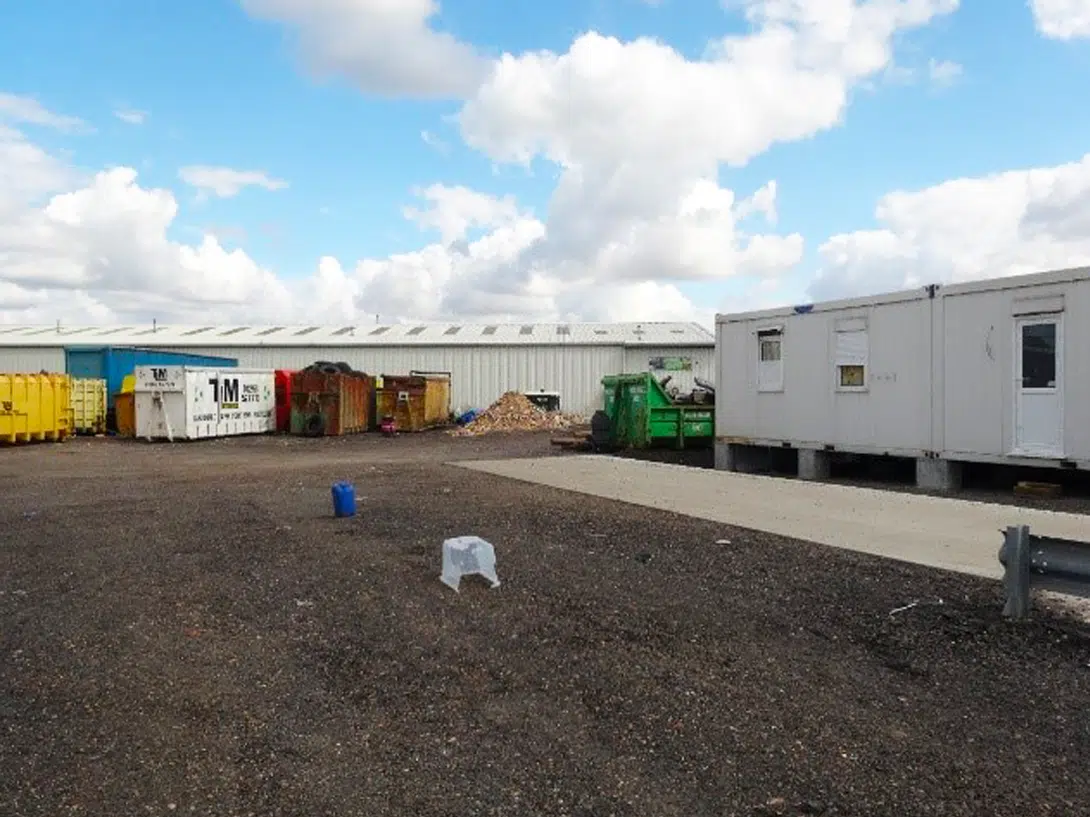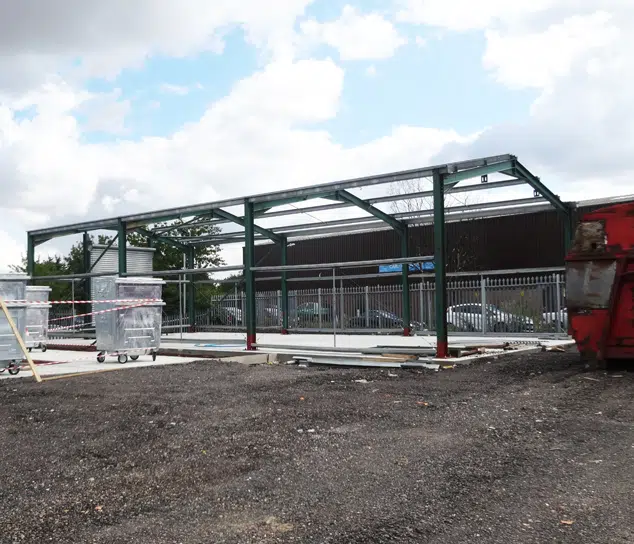
A Commercial and Industrial Waste Transfer Station required environmental services to support an application for a bespoke Environmental Permit for a commercial and industrial waste transfer station to accept 75,000 tonnes per annum of commercial and industrial waste including 5,000 tonnes of asbestos bearing waste. Lustre Consulting were commissioned to produce an application stage Site Condition Report, Environmental Risk Assessment, OPRA assessment and associated drawings and applications forms to support the bespoke permit application.
The application stage Site Condition report was prepared for the site in line with Environment Agency Guidance, which included a review of the geology and hydrogeology beneath the site, the nearby hydrology, the site history and that of the surrounding area including the potential for historic pollution events at the site or for the site to have been polluted by previous site uses, the proposed site surfacing and site drainage for the waste transfer station and the proposed activities to be permitted. Based on this assessment and following discussions with the Environment Agency, Lustre were able to demonstrate that a Baseline Site Investigation was not required as part of the application process, which enabled the client to proceed more quickly with the permit application.

The Environmental Risk Assessment identified a number of potential hazards and sensitive receptors associated with the proposed activity and permit application. However, the qualitative risk assessment determined all risks to be negligible (i.e. assessed as not significant) or low. This reflected the nature of the proposed activities, the limited potential for emissions, the presence of hardstanding across the site, controlled drainage measures and the odour, dust and noise management measures to be implemented during the sites operational phase.
By providing the above-mentioned services and developing a good working relationship with the Environment Agency, Lustre were able to successfully assist the clients in applying for a Bespoke Environmental Permit and have more recently provided Environment Services to support the variation of the permit to include a vehicle depollution facility at the site.
How we can protect your construction site from unnecessary delays and costs. If piling is part of your construction plans, a piling risk assessment could be a vital step to avoid potential problems that could disrupt your project, including: Piling risk assessments are now explicitly referenced within the Environment Agency’s Land Contamination Risk Management Guidance […]
How we can protect...
A surface water soakaway is used to capture then allow the infiltration and filtration of water runoff through a subsoil to the water table below. Your soakaway should provide sufficient short-term storage of surface water and allow the surface water to percolate into the surrounding ground. The National House-Building Council (NHBC) provides detailed guidance on […]
A surface water...
Working on a construction project can come with a long ‘to do’ list. Not only that, but you have to deal with the stress of navigating planning conditions as well as numerous building regulations. Acoustic issues don’t have to further complicate this process. Could an Acoustic Assessment be a requirement for your site? Of all […]
Working on a...
Contamination is not always something that can be seen; often contamination is invisible, buried below ground or is present in perfectly normal looking topsoil.
This is a question...